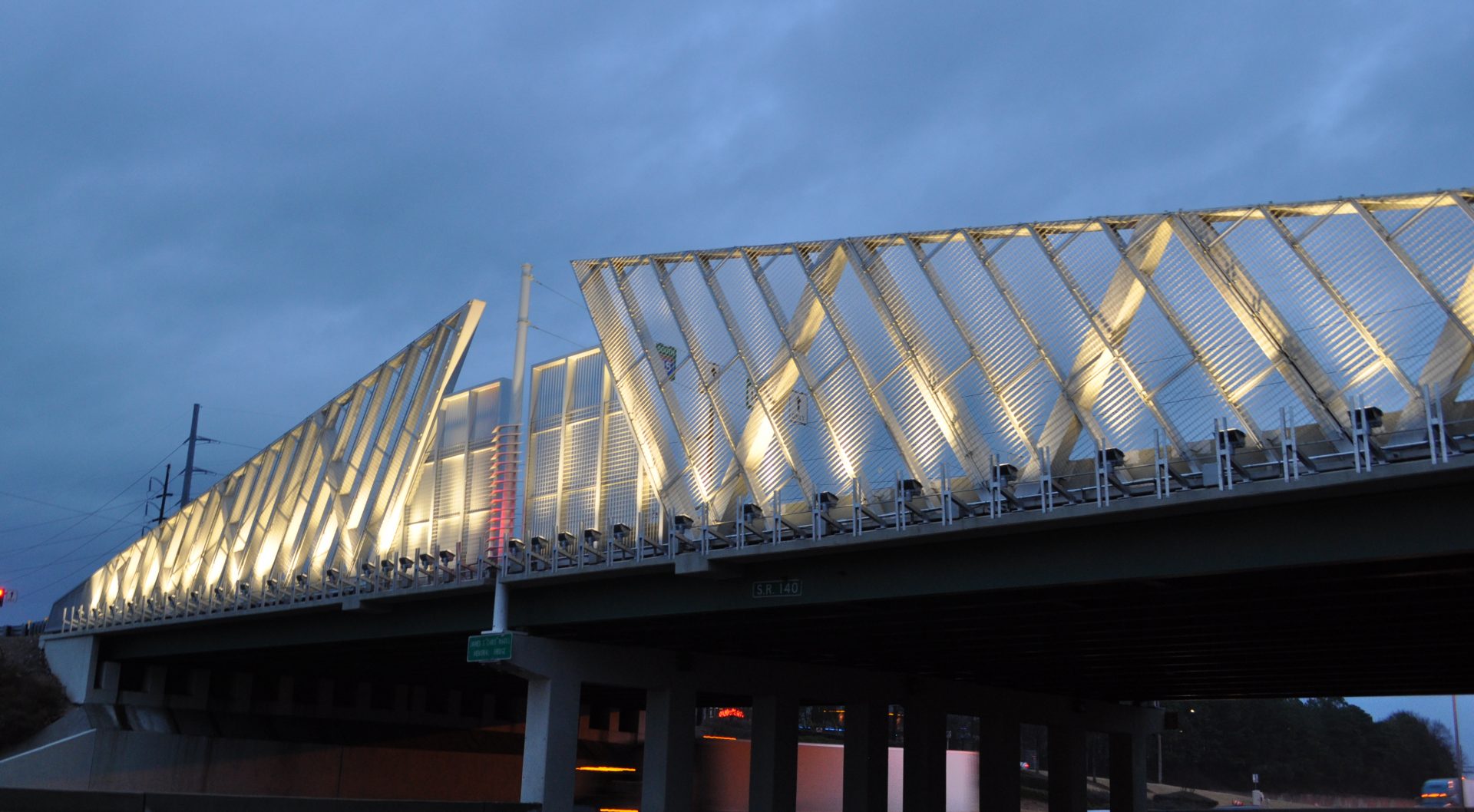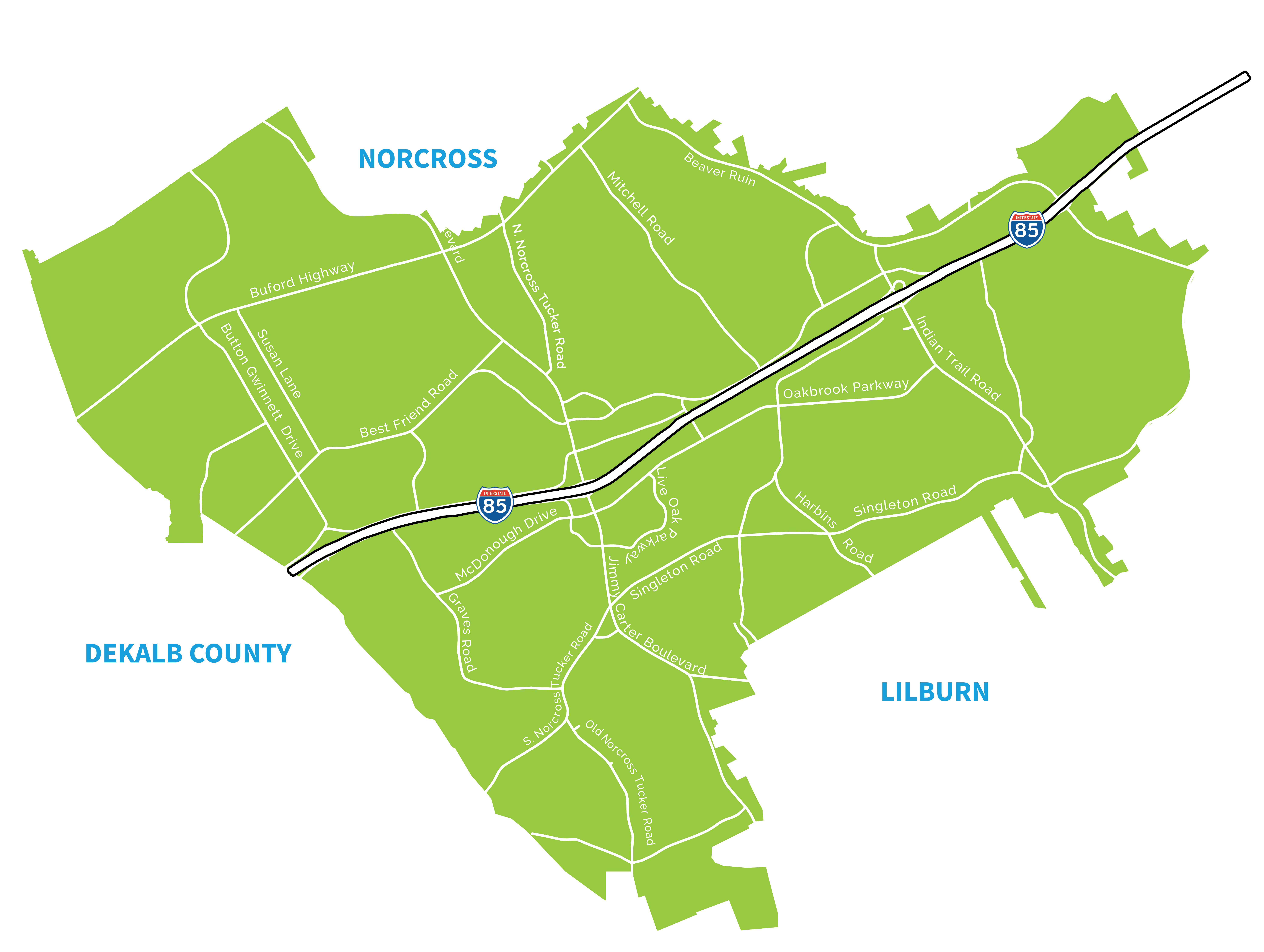The Gwinnett Village CID has partnered with the City of Norcross and the Georgia Tech Foundation to fund a study examining the needs and strengths of the areas growing immigrant population with the end goal of developing an informed plan for immigrant integration.
PROJECT TITLE:
Planning with Immigrant Communities in Norcross
PROJECT PARTNERS:
Mayor Bucky Johnson; City of Norcross City Council; Gwinnett Village Community
Improvement District; Georgia Tech Foundation.
LAY OF THE LAND:
In the last thirty years, the Atlanta metropolitan’s immigrant population has increased by 425%. Regionally, and nationally, the image of a city that embraces its immigrant communities is very important, and it is time to seek a more integrated scale of planning for immigrant communities. Norcross is at the nexus of new immigration in Georgia, as it has expanded post initial 1970s refugee resettlements into the older housing stock along Buford Highway. Recent immigrant booms and ethnic entrepreneurship have fueled residential and economic growth in the area but also migrated further north along the corridor into Gwinnett County.
Spanish language speaking neighborhoods in Southeast Atlanta (central city) declined over the 1990s, while the percentage of Spanish speakers in suburban Atlanta neighborhoods grew.
Gwinnett county is perhaps the current poster child of new levels of Georgian diversity, where “nearly one in four residents is foreign-born…different from other metro counties because its minority make up is a more balanced mix of black, Hispanic, and Asian” (Pickel, AJC, 2008). Where Latinos are the largest foreign-born group in Atlanta, Asians are the fastest growing group in Georgia. The highest growth in absolute numbers came to suburban Spanish language suburbs in Atlanta.
The city is already an important place of commerce and industry, and becoming even more culturally vibrant. Hong Kong Supermarket and the Vietnamese Community Center are a draw for the diverse Asian community, another reason why many service organizations have chosen to operate out of the Norcross. Rapid population growth from both Asian and Latino immigrants have led to wonderful contributions to the diversity of Norcross, and in general, these two groups will lead residential growth in Gwinnett County and Atlanta metro for a long time to come. As growth happens, we at Georgia Tech propose strategic, smart growth, to accompany the efforts of residential and business leaders from those communities.
CONTENT OF PROJECT:
Although diversity has led the region’s growth, it is important for cities to understand emergent communities, new challenges, and growth opportunities along two parallel topics of immigrant integration:
1) Civic Engagement and Increased Community Participation
2) Economic Development and Small Business Growth
The two arms will examine the immigrant community’s needs and strengths from both a
residential, and business perspective.
SPRING 2015 GRADUATE STUDENT STUDIO: “Planning with Immigrant Communities”
The studio team will conduct a comprehensive analysis of Hispanic/Latino and Asian residential clustering, community needs, and economic development opportunities. GT/SCARP students will play an important role in understanding the process of demographic and political change, across cultural differences in these areas and translating them into recommendations for strategic improvements related to the Jimmy Carter Blvd Corridor, City of Norcross, and unincorporated Norcross.
This studio will aid the Gwinnett County and the City of Norcross in understanding the strengths of immigrant contributions and the needs of Georgia’s growing Asian and Latino constituents in order to produce an informed strategic plan – thus helping Atlanta metro to keep pace with cities and counties that have already implemented their own plans for immigrant integration (Chicago, 2012; NYC, 2013).


